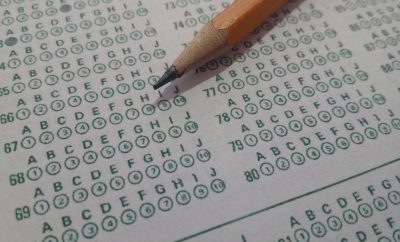
Education
Countdown to LSAT: Logical Reasoning
It’s week two in our quest here at Law Street to help you with the LSAT. This week, let’s focus on the Logical Reasoning section. Our resident LSAT tutor Nick thinks that it’s a good follow up to last week’s post on Logic Games since they deal with some of the same skills and ways of thinking.
The Logical Reasoning section tests your ability to think critically and form an argument — a basic skill that anyone who would like to be a lawyer needs to master. Although the questions you’ll see in this section aren’t necessarily legal, they mirror the kind of logic and critical thinking that lawyers implement in real life everyday.
The format is pretty simple: you read a brief passage, and then you answer a question or two about it, selecting from five answers.
So how do you master the Logical Reasoning section? Well here are some tips to help you study, and to get a great score on test day.
Be detail oriented: The Logical Reasoning section is all about detail. After all, it’s used to test your recognition and analysis of a certain, very specific argument. Therefore some of the possible answers that they’ll give you will be sort of like red herrings. They may make sense, and they may even be true statements, but they will not be what the question is asking you. Make sure to read the prompt carefully so you know exactly the scope of the question, and don’t get tripped up by answers that are true but are not what is being asked.
It’s also important to look out for certain buzz words. If you’re searching for the conclusion in a prompt, chances are it can be found after a word like ‘thus’ or ‘therefore.’ More evidence would usually be located after words like ‘because’ or ‘since.’ For more buzzwords, pay attention to what ‘except,’ ‘all,’ ‘many,’ and other quantifying words indicate.
Some of this does seem intuitive, I know — obviously anyone taking the LSAT knows what words like ‘therefore’ and ‘many’ mean. But when you’re trying to move through the test as quickly and accurately as possible, it’s important to look for those words that will help you locate what information you need efficiently.
Consider working from right to wrong: Some people find it more helpful to start with eliminating wrong answers. If you keep the parameters in mind, as I mentioned above, you can quickly cross out the irrelevant answers and ones that don’t fit within the scope. Narrowing down the question to two possible answers, and then picking out the best choice from there is always going to be easier than picking the best answer from five.
Know the format: The questions are usually arranged in a particular way. The first 12 questions tend to have a higher concentration of easier problems. As you move on, approximately numbers 14-20 will contain the most challenging questions. The last grouping of questions are more of a mixed bag.
So you should prioritize: All questions are weighted equally. You don’t get more points for the questions that are considered more challenging. So make sure that you get as many done as possible — and if you skip one that’s stumping you i order to answer two easier questions, that will benefit you. Prioritize getting as many done correctly as possible.
But do answer everything: At the end of the day, if you have no idea, guess. You don’t lose any points for getting one wrong, and there’s a 1/5 chance that you’re right. If you’re stumped between a few answers, the chances that you’re correct is even higher. Just make sure that you don’t leave anything unanswered as you would obviously have no chance of grabbing any extra points.
As always, keep practicing, keep studying, and use these tips to help you get that score you want come test day. Happy studying and check back next week when I break down the Reading Comprehension section.
—
Anneliese Mahoney (@AMahoney8672) is Lead Editor at Law Street and a Connecticut transplant to Washington D.C. She has a Bachelor’s degree in International Affairs from the George Washington University, and a passion for law, politics, and social issues. Contact Anneliese at amahoney@LawStreetMedia.com.
Featured image courtesy of [Brian Hillegas via Flickr]








Comments